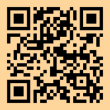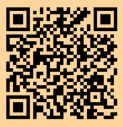Where is home? What do you know about the place where you live?
Prep for the Session
At-a-Glance
This resource prompts us to relate to the places where we live through the value of awareness. It asks us to consider how aware we are of and connected to our surroundings. It draws on the opening narrative of Genesis as a way of situating ourselves in a place of tension, as both being part of the larger world – wanderers – and also deeply connected to the local places where we live – homesteaders. Through a self-assessment activity, learners will be able to see how much they know about their physical surroundings and where their natural resources come from. It concludes with a chance to identify how connected we feel to the land where we live, and to recognize that knowing more might make us more climate resilient, better able to respond to crisis and adapt to a changing world.


- Sourcesheet for havruta text study
- “Where you at?” handout for activity section
- Digital device for optional activity

- For older teens, young adults and adults
- For a mixture of text study and self-assessment activities
- For more formal settings
Let’s Get Started
FRAME THE ISSUE

Read the passage below:
How connected are we to the places where we live? What do we know about them as a result? What don’t we know?
These questions prompt us to think about our own awareness of the places where we live, the natural cycles and resources that sustain us, and our own relationship to being part of one place and at the same time, connected to many places.
Do you ever imagine the lives of your ancestors 200 or 2000 years ago and the ways your life is different? What did they know about the world that we do not? The lives of many middle-class people have been made extensively more comfortable with indoor plumbing and heating, electricity, supermarkets, the internet, smartphones and all that comes with these comforts and conveniences of the modern world. (Of course, there are still many in the world today who are living without such comforts, and there is much work to be done to bring them to everyone.)
These engineered systems, while making our lives safer and less physically demanding, also remove us from the natural systems that ultimately shelter and sustain us, and have oriented us for millions of years: the sun, water cycle, weather, plants, soils, and animals.

Facilitator prompts the group:
- Based on the above framing, what do you not know about your resources that you wish you did?
- How does that lack of knowledge make you feel?
- Close your eyes and think about the place where you currently live. What are the first three natural elements that you think of or see in your mind? Share them with the group.
Continue reading:
Many Jewish families have histories of forced or chosen migration and are not living in the places where their grandparents were born. That fact might have us consider how we relate to the land where we live right now. Are we wanderers – from lots of different places – or are we homesteaders – of one place? As a result of how we answer that question, what should we know about the places where we live?
Facilitator prompts the group:
- Based on your own personal experiences, do you view yourself as part of the larger world – a wanderer – or more connected to the place where you live – a homesteader?
- Why might it be good to be a little bit of both?
EXPLORE THE VALUE

Continue reading to deepen the framing and conflict for the group:
Judaism is full of stories about seeing things we may have otherwise been blind to. In other words, many narratives in our tradition have a focus on expanding our awareness.
Awareness as a value prompts us to be deliberately knowledgeable and conscious of all that is around us, and requires an openness to new information and experiences.
And yet, often as we grow in knowledge and age it becomes more difficult to adopt new perspectives and be truly aware of all that is around us. It takes deliberate focus to keep our eyes open and absorb that sense of awareness. In the activity and text that follow, we will explore a sense of place and home through the value of awareness.

Facilitator prompts the group:
- Can you remember learning a new concept or piece of information that contradicted your original way of seeing the world? How did it change what you know about the place where you live?
- What is hard about being “aware” of your surroundings?
ANCHOR IN JEWISH WISDOM

Read the passage below for context:
What do Jewish creation narratives tell us about what we are made of and where we are from?
Our creation out of dust raises questions about our rootedness and our relationship to home and place. It offers a lens for us to think about both ourselves as homesteaders – being of one place – and as wanderers – being of the whole world.
Through a close reading of the two texts below from Bereishit/Genesis, we will delve into this duality, and explore how awareness can help us best connect to the world and its natural resources.
ACTIVITY

 |
“Where you at” questions:
|

Facilitator prompts the group:
- Assess how well you scored in answering the questions above. How many were you able to answer?
- If your score was low, what does that say about your connection to the place where you live?
- When or why might it be ok to not know about the place where you live? (ie – Are you in camp? Out exploring the world?).

Prompt action

Read the following:
After having reviewed the questions above, let’s now return to themes in our text study and Jewish anchor as a way to raise where we see these questions in our own lives.
………………………………………………………………………………………………………………………………………………………..
Facilitator prompts the group:
- Using the two explanations from Rashi above, in what ways are you a wanderer (from the four corners) and in what ways can you see yourself as a homesteader (from one particular place)?
- On a separate sheet of paper, draw two columns – one labeled “Wanderer” and one labeled “Homesteader” – and list the ways that you can fall into each category. (2-3 points per column.)
- Discuss your lists in pairs with a havruta/partner
Facilitator prompts the group:
- What connection do you feel to your current home? What do you think you should know about the land where you live? Spend 2-3 minutes writing your answer.
- How can knowing something about your home-land make you more climate resilient, better able to respond to crises and adapt to a changing world? Spend 2-3 minutes writing your answer.
Facilitator should encourage participants to share one of their answers to the questions above.
***Optional activity for taking further action***
Expand your awareness by gaining knowledge about your home-land.
- Choose a few of the questions on the “Where you At?” quiz and search online for answers. You can start with these two websites.
 |
 |
- If you understand where your garbage goes are you more motivated to compost or otherwise reduce your waste? If you know where your water comes from and where it goes after you use it are you more careful about what you put in the water? Does getting to know some of the trees in your neighborhood change what you see when you walk around?

Close with intention

In this conversation we took a contemporary issue that impacts us all – our relationship to the environment, knowledge of and connectedness to the places where we live – and explored it through the value of awareness. We had a chance to think deeply about our own levels of awareness, to consider what is hard about being aware and to test our own levels of knowledge of our surroundings. Through Jewish texts we deepened the conflict between being connected both to one place, and to the whole world, and considered how more awareness and knowledge might help us feel more resilient in a climate changing world. We hope you now feel more empowered and equipped to increase your levels of awareness of your surroundings, as you connect to the place where you live.
………………………………………………………………………………………………………………………………………………………..
Facilitator prompts the group:
- As a result of the conversation you just experienced, what is one commitment you will make in the coming week to expand your own sense of awareness of the place where you live?






 Back to Where is home? What do you know about the place where you live?
Back to Where is home? What do you know about the place where you live?